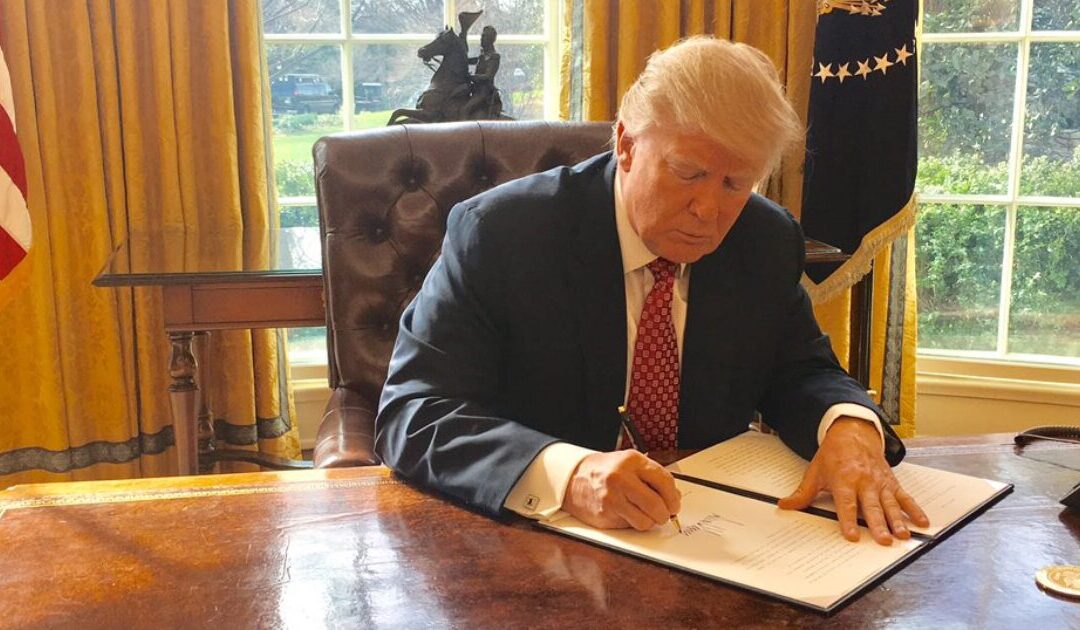
Trump Is Right About Securing the Panama Canal
Trump Is Right About Securing the Panama Canal
January 29, 2025

President Donald Trump has vowed to “take back” the Panama Canal, arguing that Panama has violated its neutrality pledge and allowed China to gain control over the waterway.
Emphasizing the canal’s strategic importance—a vital trade route built by the U.S. to connect the Atlantic and Pacific Oceans—he warned that it must not fall into the “wrong hands.”
The canal is crucial to global trade, with over two-thirds of its cargo linked to the U.S., making it a key asset for both the global and American economies.
Trump has also criticized Panama for high toll fees, claiming that American ships and the U.S. Navy are being unfairly charged. He warns that allowing China to control or restrict access to the canal would pose a serious threat to U.S. national security.
At a Senate hearing on the Panama Canal, legal scholar Eugene Kontorovich argued that the U.S. has “preemptive authority” to intervene if China’s influence or high passage fees compromise the canal’s neutrality.
He cited the 1977 treaty signed by President Jimmy Carter, which transferred sovereignty to Panama but granted the U.S. the right to defend its neutrality.
Testimony from Federal Maritime Commission Chairman Louis Sola further underscored China’s growing presence in Panama since 2015, including Belt and Road Initiative projects and state-owned companies linked to the People’s Liberation Army.
Senator Ted Cruz warned against allowing China to expand its influence in the Western Hemisphere, while shipping industry experts emphasized the canal’s critical role in U.S. trade, noting that 75% of its traffic is linked to the United States.
With growing concerns over neutrality, economic leverage, and national security, the future of the Panama Canal remains uncertain.
Though the treaty permits military action to restore neutrality, it does not justify a permanent U.S. takeover, leaving the path forward uncertain.
However, even if a U.S. takeover were temporary, it would be logical for Washington to insist that Panama can only resume control of the canal once it demonstrates the ability and commitment to defend it.
Yet, without a standing army, Panama would struggle to prove that it is capable of ensuring the canal’s security against external threats.
Panama does not have a standing military, having abolished its armed forces in 1990 following the U.S. invasion that removed Manuel Noriega.
In 1994, this abolition was cemented in the country’s constitution, making Panama one of the few nations without a formal military.
Instead, security is maintained by the Public Forces, which include the National Police for internal security, the National Aeronaval Service (SENAN) for maritime and aerial defense, the National Border Service (SENAFRONT) for border security, and the Institutional Protection Service (SPI) for government and infrastructure protection.
While these forces handle domestic threats, Panama lacks the capability to defend the Panama Canal against a major external threat, relying instead on regional alliances and U.S. security cooperation.
This raises concerns about whether Panama alone can ensure the canal’s neutrality, particularly amid growing tensions over China’s economic influence in the region.
China’s involvement in the Panama Canal began in 1996 when Panama outsourced management of its entry ports—Cristóbal on the Atlantic and Balboa on the Pacific—to Hutchison Whampoa, a Hong Kong-based company.
At the time, U.S. officials viewed the deal as non-threatening, since Hong Kong was still under British rule.
However, after Hong Kong’s return to Chinese control in 1997, the Chinese Communist Party (CCP) gained influence over Hutchison’s global operations, raising long-term strategic concerns.
Today, the Panama Canal faces growing risks from China’s commercial presence, embedded technologies, and strategic infrastructure projects.
These factors increase Beijing’s ability to disrupt or control the canal, a scenario that could have global security implications.
As these concerns intensify, it becomes increasingly urgent for Panama and its allies to address the strategic consequences of China’s influence in the region.
China’s dominance is not limited to Panama. Across Latin America, it employs aggressive tactics to secure critical infrastructure and resources.
Huawei has offered free 5G kits to Brazilian agribusinesses, while bribery has been used to secure contracts, as seen with El Salvadoran officials for a port deal in 2019, road projects in Bolivia, and a hydroelectric project in Ecuador involving former President Lenin Moreno.
This relentless push reflects Beijing’s broader strategy to control vital infrastructure, telecommunications, and natural resources, positioning itself as a dominant global power and a growing threat to U.S. interests.
Speaking at a Turning Point USA rally, he proposed restoring U.S. control over the canal, citing both national security risks and Panama’s apparent violation of treaty obligations.
While Trump suggested that diplomatic pressure could force Panama to remove China’s presence, he did not rule out military action if necessary.
His stance underscores the growing urgency of protecting the canal from foreign adversaries, particularly China, whose increasing influence threatens U.S. security and global stability.
The post Trump Is Right About Securing the Panama Canal appeared first on The Gateway Pundit.
Go to Source
Author: Antonio Graceffo



